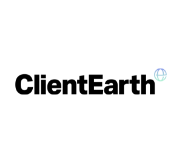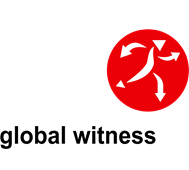
Introduction to CATWOE analysis

Understanding CATWOE
CATWOE is a strategic tool particularly effective for addressing complex social and organisational problems. It stands for Customers, Actors, Transformation process, Worldview, Owner, and Environmental constraints. The framework is especially valuable when dealing with situations involving multiple stakeholders and interconnected human systems. By considering these factors, organisations can better understand complex issues and develop effective solutions. CATWOE’s significance lies in its ability to provide a structured approach to problem-solving, ensuring that all relevant viewpoints are considered.
Origins and development
The CATWOE framework was developed by Peter Checkland and Brian Wilson at Lancaster University in the 1980s as part of Soft Systems Methodology (SSM), a systems thinking approach for tackling real-world organisational problems. They introduced this approach to address the limitations of traditional problem-solving methods, which often overlooked human elements in system analysis. It has since become a valuable tool in various fields, from business strategy to conflict resolution, offering a comprehensive way to address complex challenges. Through CATWOE, organisations can align their strategies with the needs and constraints of diverse groups, leading to more sustainable and effective outcomes.
Components of CATWOE
Customers
In CATWOE, Customers are individuals or groups affected by the system or process, including both beneficiaries and those who may be disadvantaged by it. This dual consideration ensures a complete understanding of the system’s impact and helps identify potential resistance to change.
Actors
Actors are those who implement the changes or are involved in the process. Identifying the key actors helps in understanding their roles and responsibilities. This ensures that each participant is aligned with the goals of the project.
Transformation process
The Transformation process describes how inputs are converted into outputs within the system. This core element focuses on the fundamental changes that occur, examining what is being transformed, how it changes, and the resulting output. The transformation must be clearly defined and measurable to ensure effective analysis.
Worldview
Worldview (Weltanschauung) represents the perspective that makes the transformation meaningful in context. This German term is commonly used in CATWOE literature and emphasises how different stakeholders’ beliefs and assumptions shape problem understanding. Understanding these varying worldviews is crucial for developing effective solutions.
Owner
The Owner is the person or group with the authority to make decisions about the system. They have the power to approve changes and allocate resources. Identifying the owner is essential to ensure that the process aligns with their objectives and priorities.
Environmental constraints
Environmental constraints are external factors that impact the system. These can include regulations, economic conditions, and cultural influences. Recognising these constraints is vital to develop realistic and sustainable solutions that can operate within these limits.
Practical applications of CATWOE
Business strategy
CATWOE is invaluable in shaping effective business strategies. By analysing each component, organisations can align their objectives with stakeholder needs. This alignment ensures that strategies are comprehensive and consider all relevant factors, enhancing decision-making and planning.
Conflict resolution
In conflict resolution, CATWOE serves as a tool to identify the root causes of disagreements. By understanding the perspectives of all parties involved, it facilitates open communication and mutual understanding. This approach helps in developing solutions that are acceptable to everyone.
Case study example
Consider a retail company facing 15% declining sales. Using CATWOE:
- Customers: Identified 30% shift in customer preference towards online shopping
- Actors: Retrained 50 staff members in digital sales
- Transformation: Shifted from pure brick-and-mortar to omnichannel approach
- Worldview: Recognised changing retail landscape
- Owner: Board approved £2M digital transformation budget
- Environmental: Adapted to post-COVID shopping behaviours
- Result: 25% sales increase within 6 months through integrated online-offline strategy.
Through these applications, CATWOE proves to be a versatile and effective framework, aiding various sectors in addressing complex challenges with confidence and clarity.
Benefits of using CATWOE
Comprehensive problem understanding
CATWOE fosters a deeper understanding of complex issues by examining multiple perspectives. It encourages the consideration of diverse stakeholder viewpoints, which helps identify the root causes of problems. By breaking down each element—Customers, Actors, Transformation, Worldview, Owner, and Environmental constraints—organisations gain a holistic view. This comprehensive analysis leads to more effective and sustainable solutions, ensuring all aspects of a problem are addressed.
Enhanced communication
Improving stakeholder communication is another key benefit of CATWOE. By clearly defining and analysing each component, this framework facilitates open dialogue among stakeholders. It ensures that everyone involved has a shared understanding of the issues at hand. This clarity reduces misunderstandings and aligns objectives, fostering collaboration and consensus. Consequently, CATWOE helps build stronger relationships and more cohesive teams, enhancing overall organisational effectiveness.
Limitations and considerations
Potential limitations
CATWOE is most effective with social and human systems rather than purely technical problems. Its success depends heavily on stakeholder availability and willingness to participate. The framework requires significant time investment and may face challenges when key stakeholders are unavailable or resistant. Additionally, subjective interpretations of components can lead to biases and incomplete analysis.
Best practices
To use CATWOE effectively, ensure diverse stakeholder involvement to capture varied perspectives. Regularly review and update the analysis to reflect changes. Tailor the approach to fit the specific context and complexity of the issue at hand.
Conclusion
In summary, CATWOE offers a structured framework for understanding and solving complex problems. By examining key components like Customers, Actors, and Environmental constraints, it ensures a comprehensive analysis. This approach enhances problem-solving by incorporating diverse perspectives. Organisations are encouraged to apply CATWOE to improve decision-making and foster effective communication. By doing so, they can address challenges with greater confidence and precision.
FAQs
What does CATWOE stand for?
CATWOE represents Customers, Actors, Transformation process, Worldview, Owner, and Environmental constraints.
How is CATWOE used in business?
In business, CATWOE aids in strategic planning by analysing different perspectives and aligning objectives.
Can CATWOE be applied to personal problem-solving?
Yes, CATWOE can be adapted for personal issues by examining relevant components for comprehensive solutions.
What are the main benefits of CATWOE?
CATWOE provides a structured approach, enhancing understanding and communication among stakeholders.
Are there any limitations to using CATWOE?
Limitations include its focus on social systems rather than technical problems, reliance on stakeholder participation, potential biases, and the significant time required for thorough analysis.
Infographic









